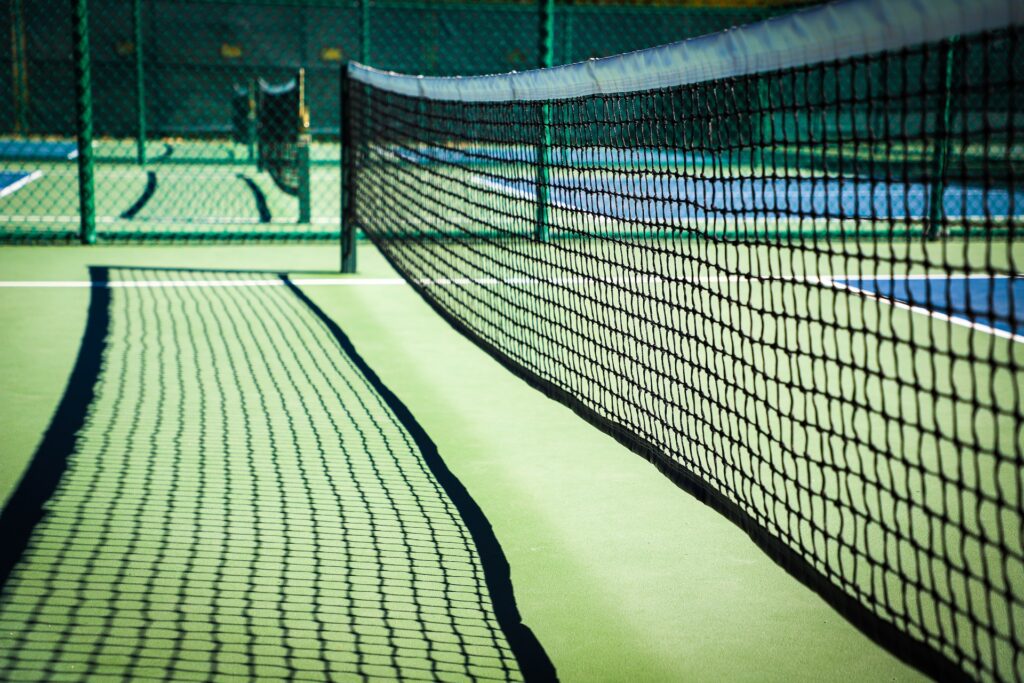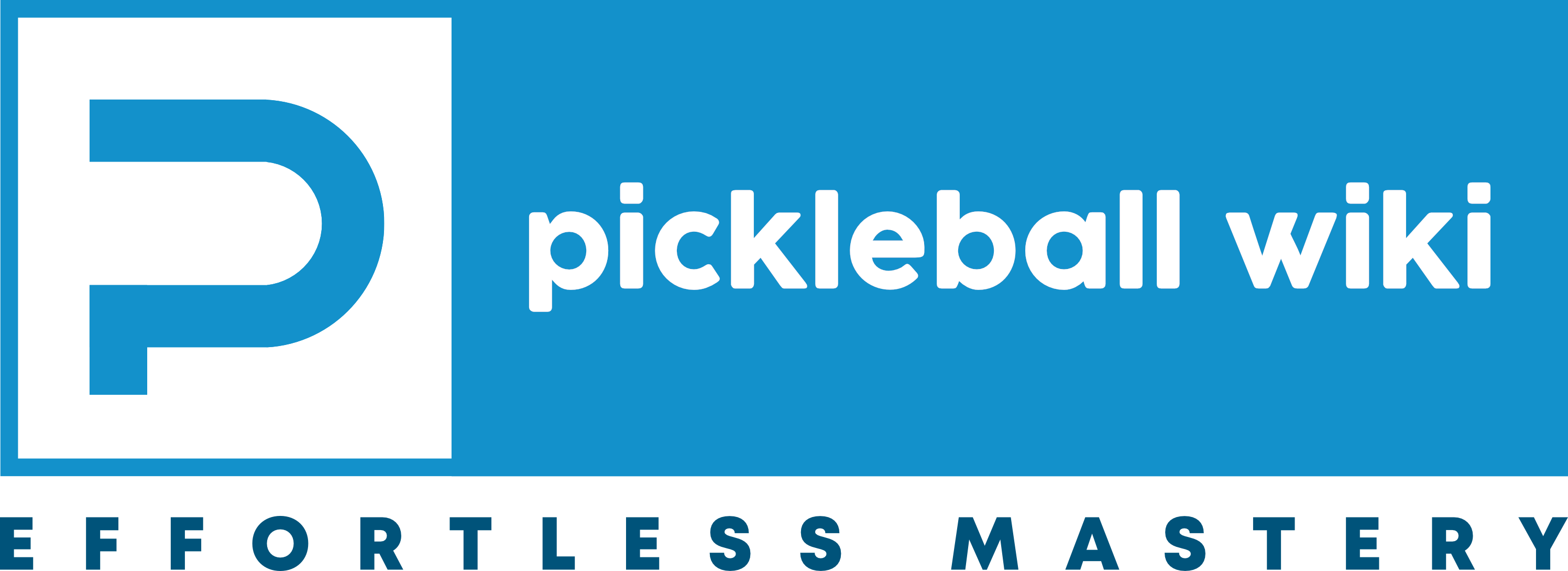It’s hard to disagree that a thorough understanding of fault rules is vital to excelling in the exciting game of Pickleball.
We promise to provide you with comprehensive insights into these essential regulations, offering valuable information to sharpen your gameplay.
In this guide, you’ll explore the various fault rules, their implications, and how they shape the overall rules and regulations of pickleball, ensuring you’re always one step ahead of your opponents.
Pickleball Fault Rules and Regulations
In the exciting sport of pickleball, understanding the pickleball fault rules is crucial to play the game effectively.
In the context of fault rules and the broader scope of rules and regulations, we have gathered key insights based on tests, observations, research, and user feedback to help you navigate the world of pickleball.
Pickleball Court Boundaries
Understanding the pickleball court boundaries is crucial to avoid committing faults while playing the game. In the context of fault rules and rules and regulations for pickleball, the court boundaries play a significant role in determining the outcome of each point.
Key Court Boundary Rules
In pickleball, several rules govern the boundaries of the court. To ensure you’re well-equipped to play within these limits, consider the following key court boundary rules:
- The non-volley zone (NVZ): Also known as the “kitchen,” the NVZ is a 7-foot area on both sides of the net where volleys are prohibited.
- Baseline: The back boundary of the court, from which serves are initiated.
- Sidelines: The outer boundaries of the court, marking the width of the playing area.
Faults Related to Court Boundaries
Faults occur when a player violates the court boundary rules during a rally. Some common faults include:
- Hitting the ball outside the court’s sidelines or beyond the baseline
- Stepping on or over the NVZ line while executing a volley
- Serving from beyond the baseline
Importance of Court Boundaries in Pickleball
| Aspect | Significance of Court Boundaries |
| Scoring | Points are awarded when opponents commit faults related to court boundaries |
| Strategic Play | Utilizing court boundaries can help exploit opponents’ weaknesses |
| Rule Compliance | Adhering to boundary rules ensures fair play |
Mastering Court Boundaries
To improve your understanding of pickleball court boundaries, consider these tips:
- Familiarize yourself with the dimensions of a standard pickleball court.
- Practice hitting shots within the court boundaries during training sessions.
- Observe and learn from experienced players to better understand boundary-related strategies.
Get a complete understanding of this popular paddle sport through this extensive pickleball resource.
Non-Volley Zone Faults
In pickleball, understanding the fault rules is crucial for any player. One critical aspect of these rules revolves around non-volley zone faults. Gaining knowledge about these faults will help you stay compliant with the rules and regulations and enhance your gameplay in the world of pickleball.
Understanding the Non-Volley Zone
The non-volley zone, also known as the “kitchen,” is a 7-foot area adjacent to the net on both sides of the court. Players must adhere to specific rules within this zone:
- No volleying is allowed within the non-volley zone.
- Stepping into the non-volley zone after hitting a volley is considered a fault.
Common Non-Volley Zone Fault Scenarios
Based on observations, research, and user feedback, here are some common non-volley zone fault scenarios:
- Volleying in the zone: When a player hits the ball directly out of the air without letting it bounce while standing within the Non-Volley Zone.
- Entering the zone after volleying: A player steps into the Non-Volley Zone after executing a volley, even if it’s a follow-through motion.
- Touching the lines: If any part of a player’s body or clothing touches the Non-Volley Zone lines while executing a volley.
To grasp the intricacies of pickleball and excel in your performance, explore this detailed guide on pickleball rules.
Tips to Avoid Non-Volley Zone Faults
- Maintain awareness of your body position relative to the Non-Volley Zone.
- Work on your footwork to ensure proper positioning during volleys.
- Develop control over your shots to prevent unintentional entry into the Non-Volley Zone.
Common Non-Volley Zone Faults
| Fault Scenario | Description |
|---|---|
| Volleying in the zone | Hitting the ball directly out of the air without letting it bounce while standing in the zone. |
| Entering the zone after volleying | Stepping into the Non-Volley Zone after executing a volley, even if it’s a follow-through motion. |
| Touching the lines | Any part of a player’s body or clothing touching the Non-Volley Zone lines during a volley. |
Service Faults
Understanding the various types of service faults in pickleball is crucial for any player.
Common Service Faults
Some of the most common service faults in pickleball include:
- Incorrect Serving Technique: The server must use an underhand motion, with the paddle head below the wrist and the point of contact below the waist.
- Foot Fault: The server’s feet must be behind the baseline during the serve, and both feet must stay within the confines of the serving area.
- Wrong Service Court: The server must direct the serve diagonally to the opponent’s service court, ensuring the ball clears the non-volley zone.
Service Fault Scenarios
It’s essential to familiarize yourself with various service fault scenarios to avoid making errors during a match. Some typical service fault scenarios are:
- Hitting the ball out of bounds
- Serving before the score is called
- Hitting the non-volley zone on the serve
Tips to Avoid Service Faults
To minimize service faults, keep these tips in mind:
- Practice your serving technique consistently
- Be mindful of your foot positioning during the serve
- Focus on hitting the ball into the correct service court
For detailed explanations and visual diagrams of pickleball court setup, this comprehensive guide is an invaluable resource.
Service Fault Consequences
| Fault Type | Consequence |
| Incorrect Serving Technique | Loss of serve |
| Foot Fault | Loss of serve |
| Wrong Service Court | Loss of serve |

Double Bounce Rule
One fundamental aspect of fault rules in pickleball is the double bounce rule. As a pickleball player, you must understand this rule, as it plays a critical role in the overall rules and regulations of the game. The double bounce rule is based on the principle that each team must let the ball bounce once on their side of the court before hitting it back.
Key Aspects of the Double Bounce Rule
To fully grasp the double bounce rule and its implications, consider the following key aspects:
- Serve reception: The receiving team must let the served ball bounce once in their service court before returning it.
- Return of serve: The serving team must let the returned ball bounce once in their service court before hitting it back.
Common Fault Scenarios Involving the Double Bounce Rule
Some common fault scenarios involving the double bounce rule include:
- Hitting the ball before it bounces on serve reception
- Hitting the ball before it bounces on the return of serve
Strategies for Navigating the Double Bounce Rule
Understanding the double bounce rule can help you devise better strategies during gameplay. Here are some tips to keep in mind:
- Be patient and wait for the ball to bounce before hitting it back.
- Position yourself to hit the ball after the bounce.
- Develop a keen sense of ball trajectory to anticipate its path.
Double Bounce Rule in Relation to Other Fault Rules
| Fault Rule | Description |
| Double Bounce Rule | Each team must let the ball bounce once on their side before hitting it back. |
| Service Fault | The server fails to serve the ball correctly. |
| Non-Volley Zone Fault | Hitting the ball without letting it bounce while standing in the non-volley zone. |
Pickleball Scoring System
A vital component of pickleball gameplay, understanding the pickleball scoring system is essential for any player. As part of the rules and regulations of pickleball, knowing the scoring system, including fault rules, ensures you’re prepared to excel in the game.
Here’s an insightful overview of how scoring works in pickleball that every player should read.
Fault Rules in Pickleball
Faults are a crucial aspect of the scoring system. By recognizing common faults, you’ll be better equipped to avoid them and maintain your advantage during gameplay. Here are some common fault scenarios:
- Hitting the ball out of bounds
- Stepping on or over the baseline while serving
- Failing to clear the net
- Violating the double bounce rule
Faults and Scoring System
Faults play a significant role in the pickleball scoring system, as they determine when the serving side changes. When a fault occurs, the serving team loses the opportunity to score, and the opposing team gains the serve.
The table below highlights the impact of faults on scoring:
| Situation | Impact on Scoring |
|---|---|
| Server’s team commits a fault | Server loses serve; No point scored |
| Receiving team commits a fault | Server’s team scores a point |
Tips to Avoid Faults
To minimize faults and maximize your scoring potential, consider these tips:
- Practice proper serving techniques to avoid foot faults.
- Develop better ball control to keep shots within the court boundaries.
- Enhance your understanding of pickleball strategy to prevent double-bounce rule violations.
By incorporating this knowledge of the pickleball scoring system and fault rules into your gameplay, you’ll be better equipped to navigate the complexities of the rules and regulations and improve your overall performance on the pickleball court.
From the correct stance to the service sequence, this guide provides a thorough explanation of how to serve in pickleball.
Player Conduct and Etiquette
In pickleball, maintaining proper player conduct and etiquette is just as important as understanding the fault rules and adhering to the rules and regulations of the game. A positive and respectful demeanor ensures a fair and enjoyable experience for all participants.
Fault Rules and Player Conduct
While the fault rules dictate gameplay, player conduct contributes to the overall atmosphere on the court. It’s crucial for you to be aware of common fault scenarios and their implications on player conduct. Some key fault scenarios include:
- Hitting the ball out of bounds
- Stepping on or over the non-volley zone line while volleying
- Double hits or carries
In each of these scenarios, it’s essential to display good sportsmanship by acknowledging the fault and respecting the referee’s decision.
Etiquette Guidelines
To maintain a pleasant playing environment, adhere to the following etiquette guidelines:
- Show respect for your opponents and teammates.
- Refrain from disputing or arguing with referees or other players.
- Wait for a break in play before entering or crossing a court.
The Impact of Player Conduct on the Game
| Conduct Aspect | Positive Impact | Negative Impact |
| Sportsmanship | Fair play, mutual respect | Tension, hostility |
| Communication | Team cohesion, strategy | Confusion, frustration |
| Respect for referees & rules | Smooth gameplay | Disruptions, penalties |
By embracing proper player conduct and etiquette within the context of fault rules and rules and regulations, you contribute to a positive playing experience for everyone involved in the game of pickleball.
Remember, the spirit of sportsmanship and fair play is the foundation of a great pickleball experience.
To master the complex rules surrounding let serves in pickleball, make sure to check out this resource.
Pickleball Equipment Regulations
As a pickleball player, it’s crucial to familiarize yourself with pickleball equipment regulations to ensure you adhere to the rules and regulations of the game. A thorough understanding of the equipment requirements will help you avoid faults and penalties related to non-compliant gear.
Paddle Specifications
When selecting your pickleball paddle, it’s vital to follow the equipment regulations set forth by the governing bodies. Key specifications include:
- Material: Wood, composite, or graphite
- Maximum dimensions: 24 inches in total length, including the handle
- Maximum edge guard length: 1 inch
Ball Requirements
There are specific requirements for the pickleball itself:
- Diameter: 2.87 to 2.97 inches
- Weight: 0.78 to 0.935 ounces
- Number of holes: 26 to 40
Net and Court Dimensions
Adhering to the standardized net and court dimensions is essential for pickleball play. Key measurements are:
- Net height: 36 inches at the sidelines and 34 inches at the center
- Court size: 20 feet wide by 44 feet long
Fault Rules Related to Equipment
Using non-compliant equipment can result in faults or penalties. Some common fault scenarios include:
- Paddle surface non-compliance: Reflective or excessively textured surfaces
- Paddle alteration: Modifying paddles beyond the approved limits
- Ball non-compliance: Using balls outside the specified dimensions or weight
| Equipment Type | Key Regulations |
|---|---|
| Paddle | Material, Dimensions, Edge Guard Length |
| Ball | Diameter, Weight, Number of Holes |
| Net and Court | Net Height, Court Size |
By adhering to pickleball equipment regulations and understanding the related fault rules, you’ll be better prepared to excel in the game and avoid penalties.
Always ensure that your equipment complies with the established regulations to guarantee a fair and enjoyable pickleball experience for all players.
Pickleball Tournament Rules
Navigating the world of pickleball tournament rules can be challenging, especially when it comes to understanding the intricacies of fault rules. Within the broader context of rules and regulations, we’ll provide you with comprehensive insights into fault rules that apply in pickleball tournaments.
Common Fault Rules
Faults play a significant role in pickleball tournaments, affecting the flow and outcome of matches. Here are some common fault scenarios you should be aware of:
- Stepping on or over the service court’s baseline during a serve
- Hitting the ball out of bounds
- Failing to clear the non-volley zone (kitchen) before executing a volley
- Double-hitting or carrying the ball with the paddle
Fault Rules in Tournament Play
Pickleball tournaments follow a stricter set of rules, ensuring fair play and adherence to the rules and regulations. Key fault rules in tournament play include:
- Non-Volley Zone (Kitchen) Faults: Players must avoid volleying the ball while standing in the kitchen, or if the momentum from a shot carries them into the kitchen.
- Serving Faults: Serving faults occur when the server violates the serving rules, such as incorrect positioning or an illegal serve.
- Boundary Faults: Boundary faults happen when a player hits the ball out of bounds, or when a player or their paddle touches the court lines.
Tournament Fault Rules
| Fault Rule | Description |
|---|---|
| Non-Volley Zone (Kitchen) | Player volleying in the kitchen or carried into it by momentum |
| Serving | Incorrect positioning or illegal serve |
| Boundary | Hitting the ball out of bounds or touching court lines |
By understanding and adhering to the Pickleball Tournament Rules, particularly the fault rules, you’ll be better prepared to participate in competitive events and improve your overall pickleball experience.
Conclusion
In conclusion, fault rules are a crucial component of the overall rules and regulations that govern the sport of pickleball. As a player or enthusiast, it is essential to have a comprehensive understanding of these rules to ensure fair play and avoid any penalties or disqualifications during a match.
By incorporating fault rules into the larger framework of rules and regulations for pickleball, players can enjoy a safer and more competitive game. As the sport continues to gain popularity, it is crucial to stay updated on any changes or updates to these rules and regulations to ensure a fair and enjoyable playing experience for all.
In summary, fault rules are an essential element of pickelball’s rules and regulations, and players should take the time to familiarize themselves with them to enhance their game and uphold the integrity of the sport.

